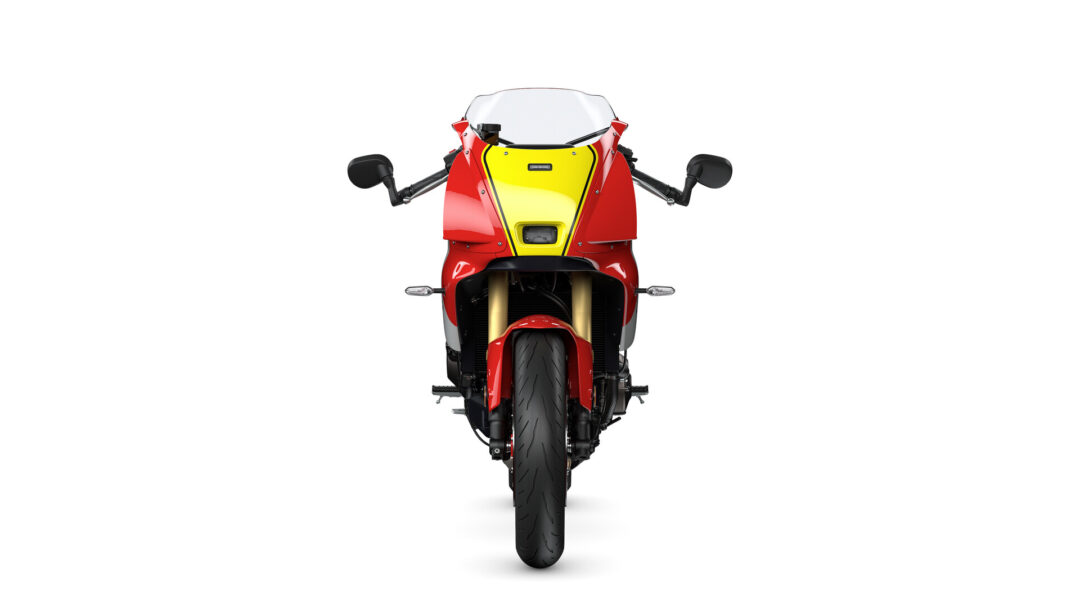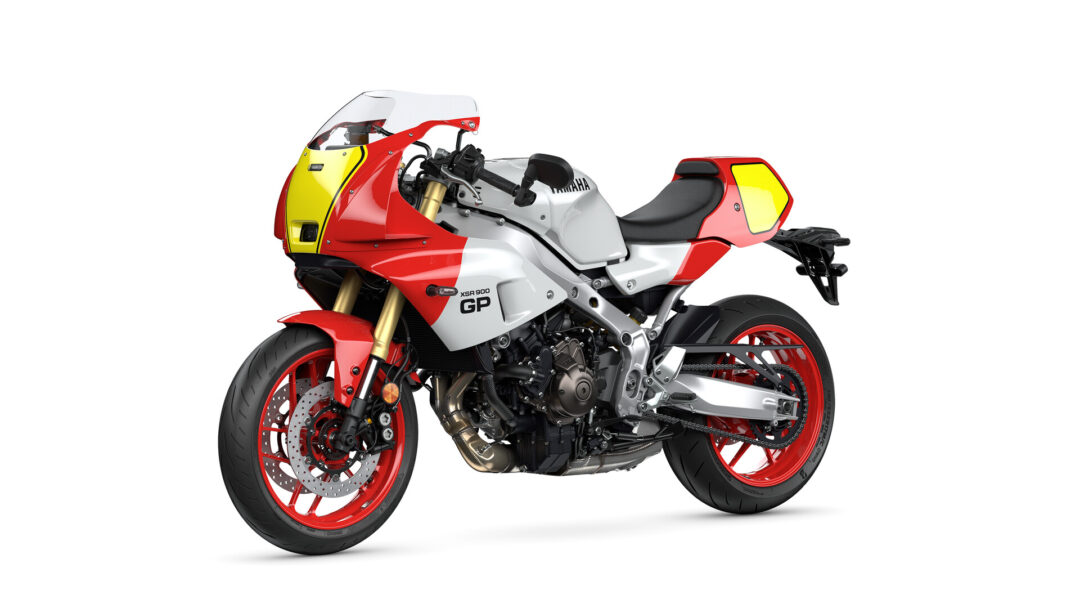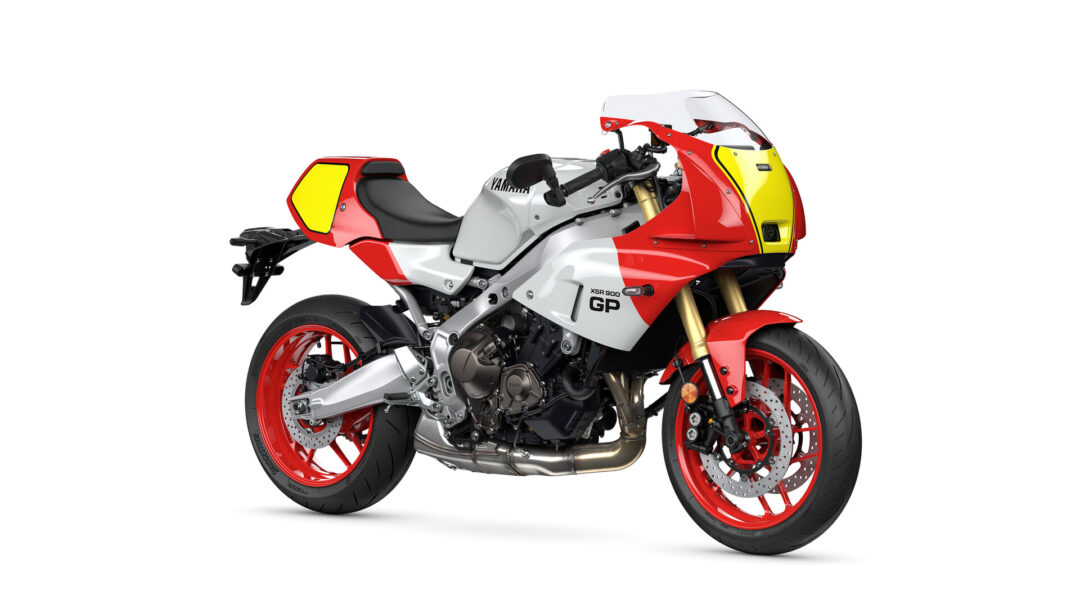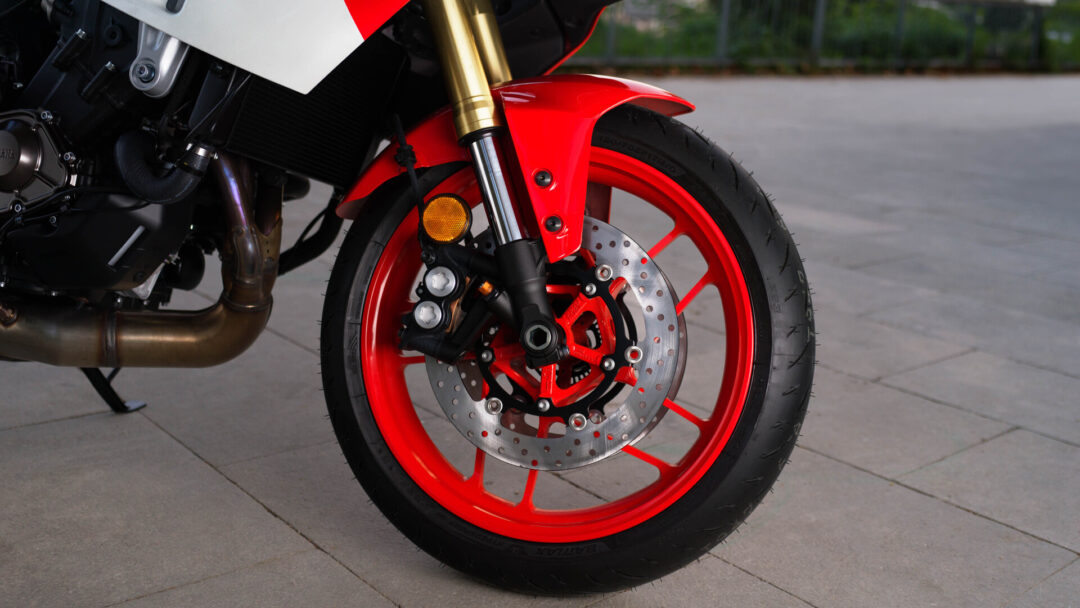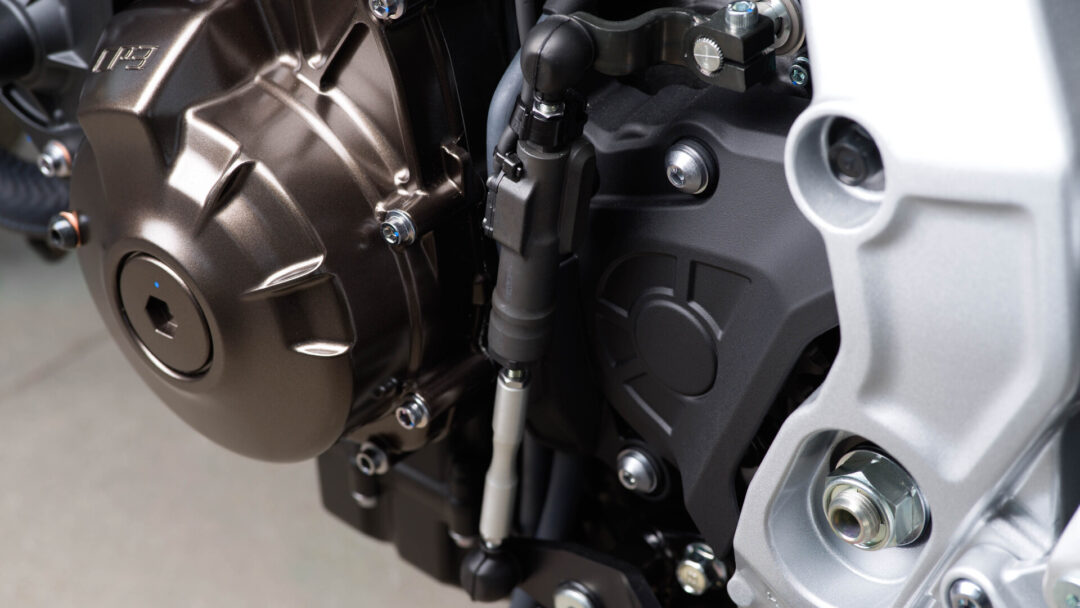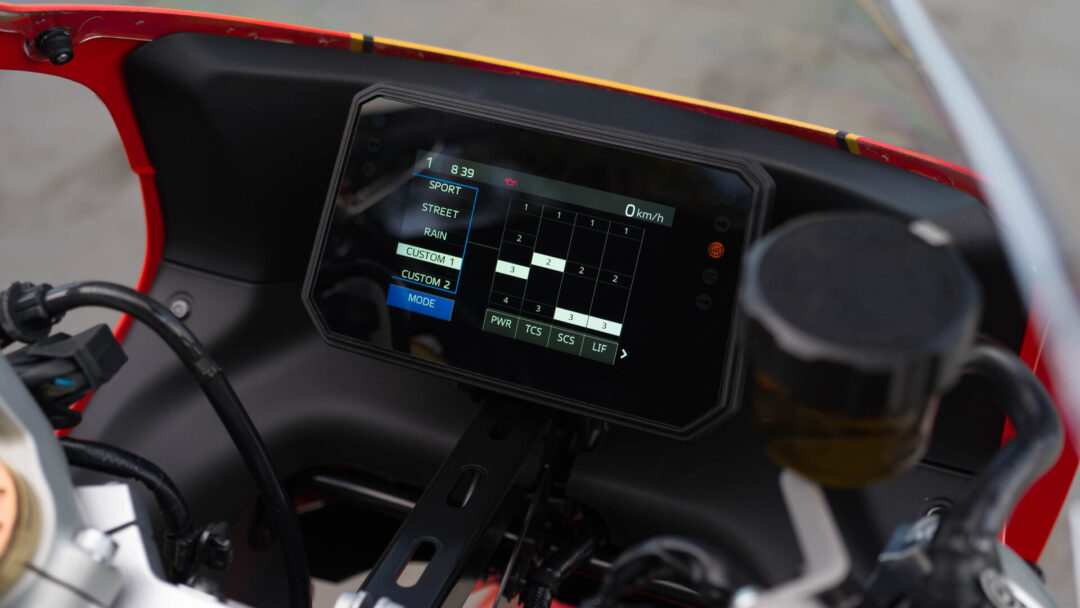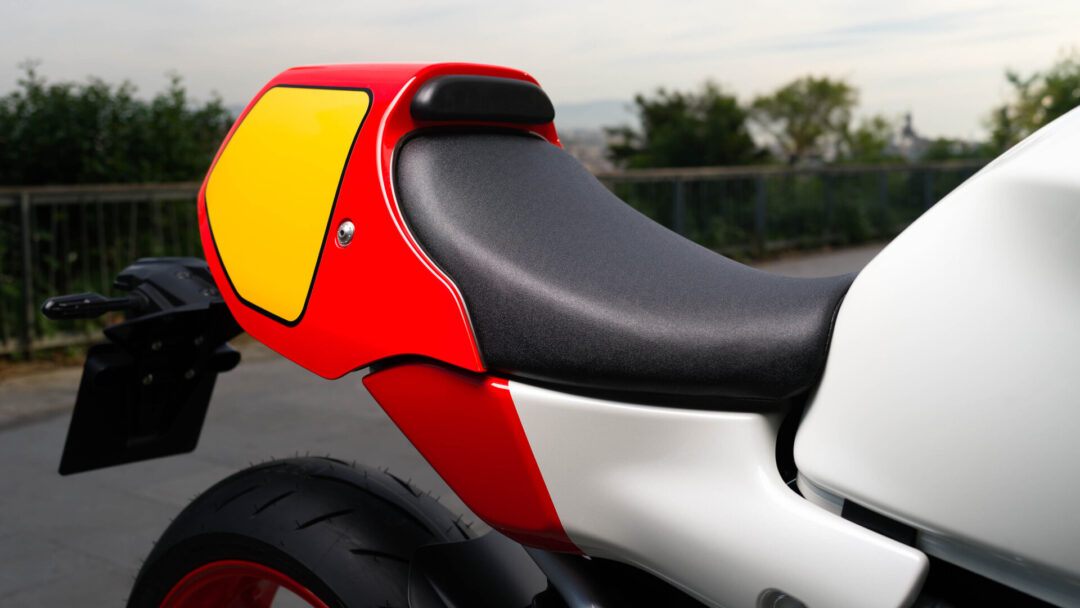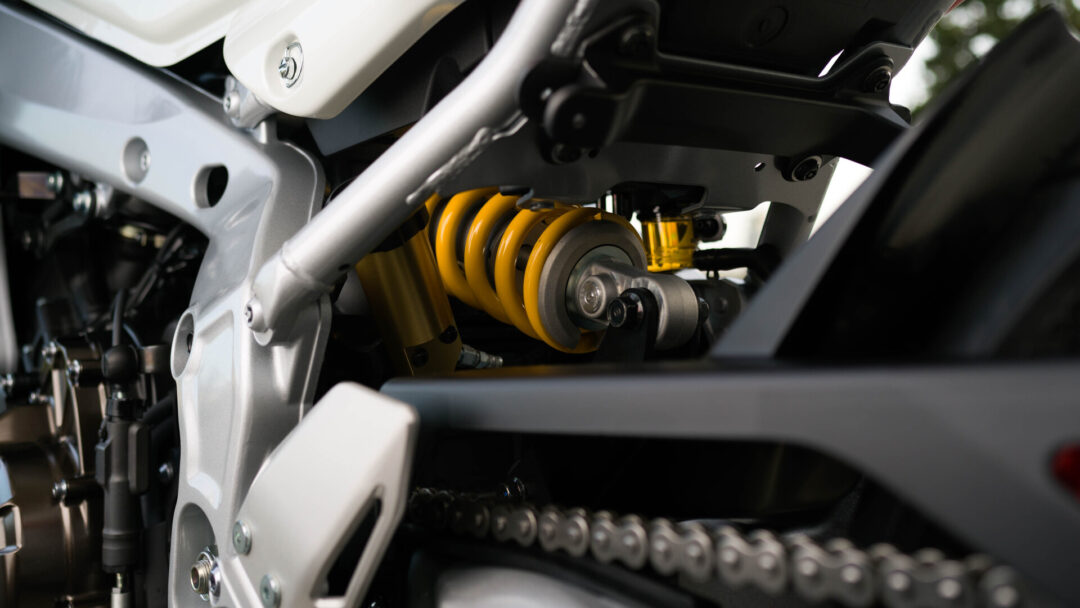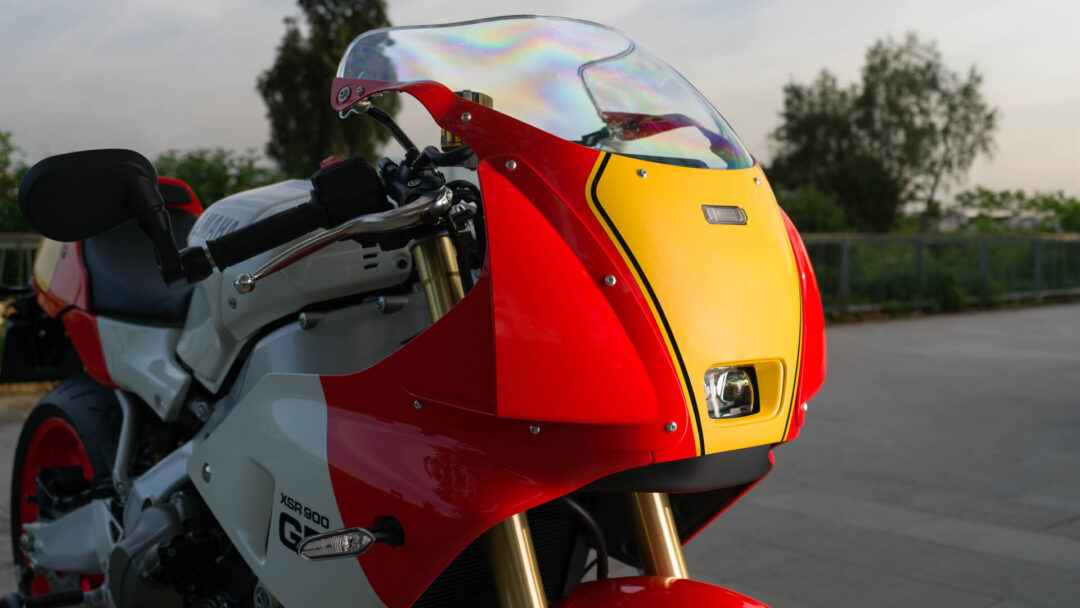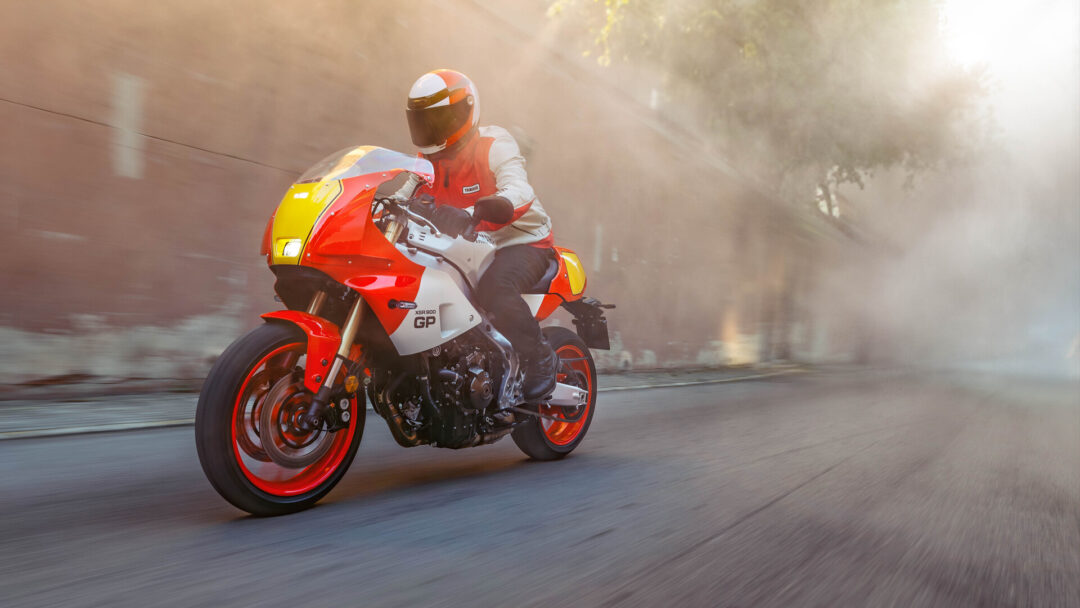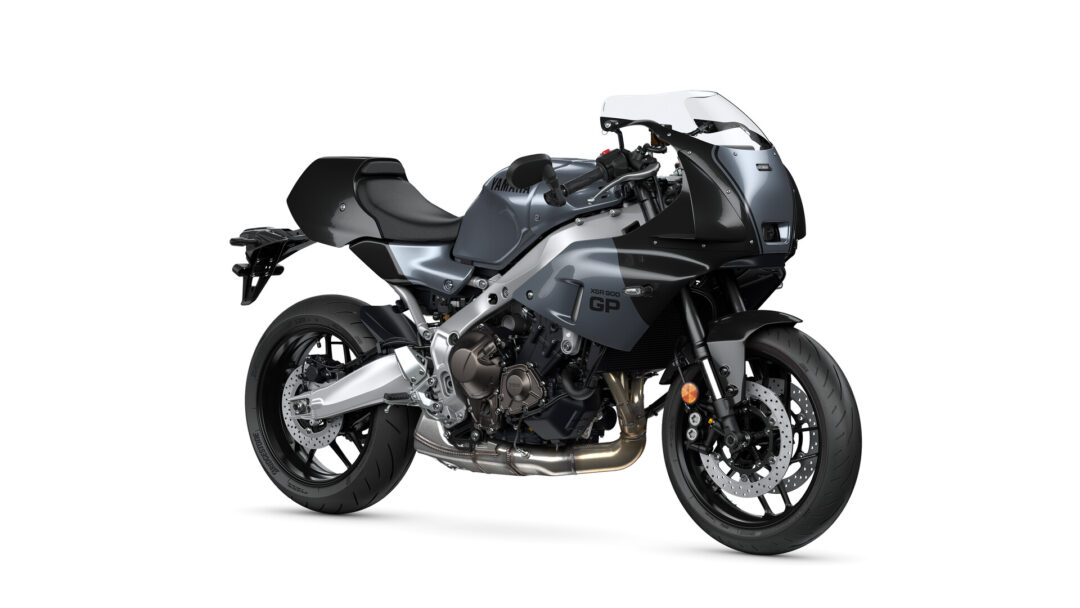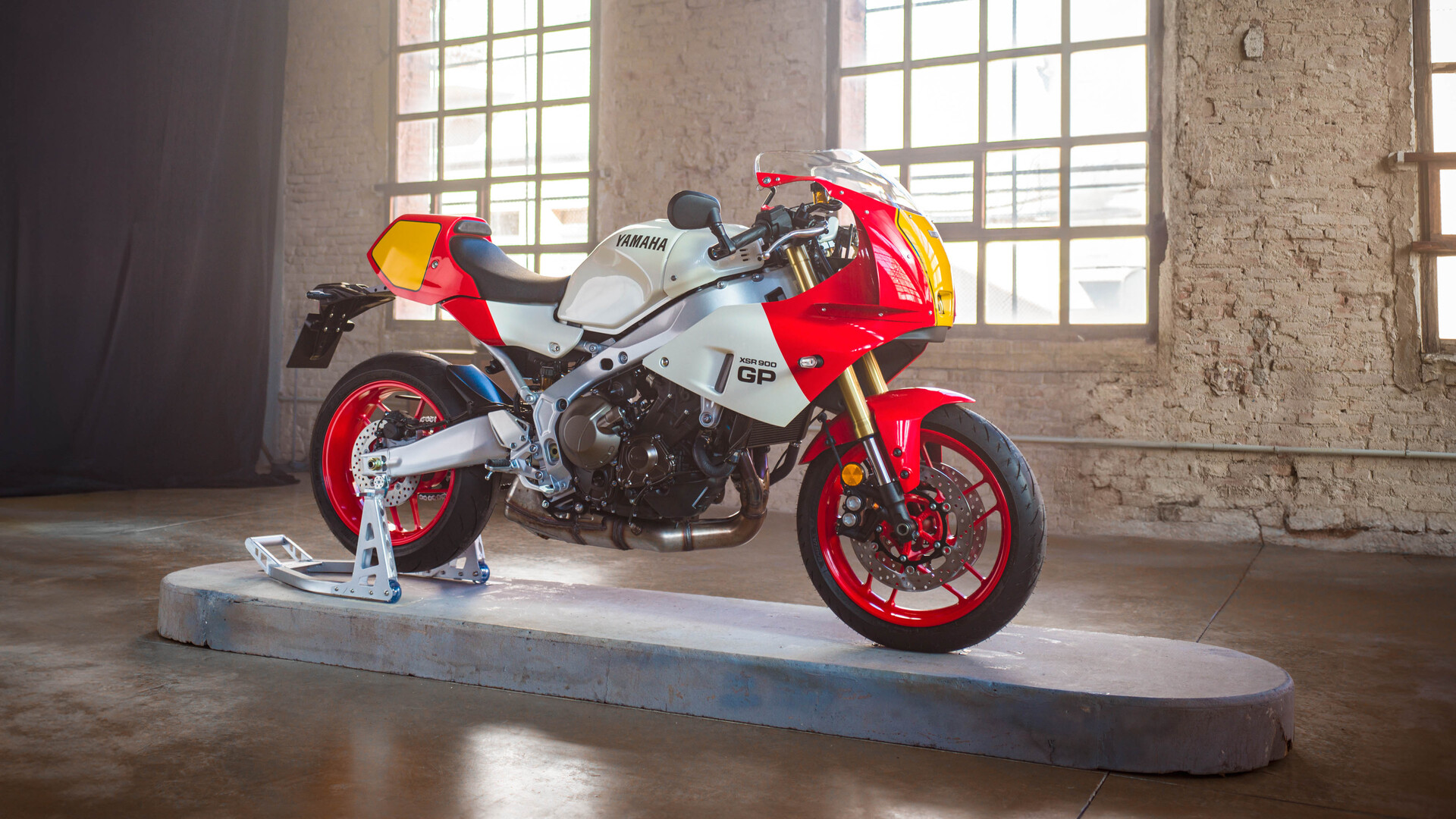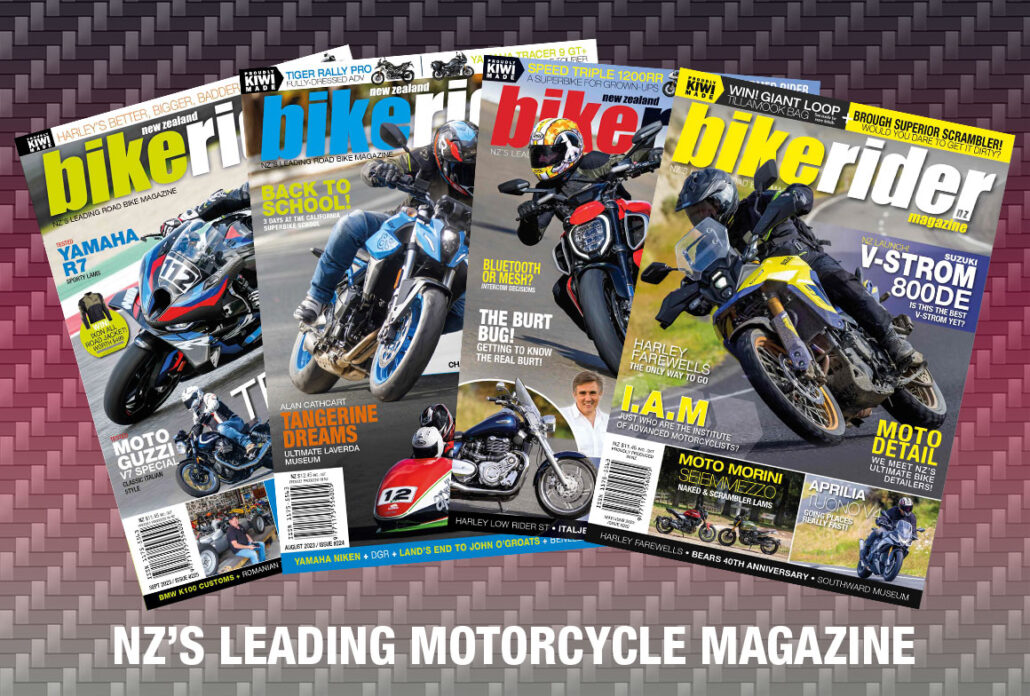Finally, the Yamaha XSR900 we’ve all been waiting for has surfaced! And the overwhelming opinion from everyone who’s seen it, is that Yamaha has hit the ball out of the park with the styling.
Racing is in Yamaha’s DNA. And the era when ‘King Kenny’ was piloting his YZR500 to a third consecutive GP title in 1980 was the Golden Era, with the new Yamaha styled to look like the 500cc Grand Prix machine that took Roberts to victory.
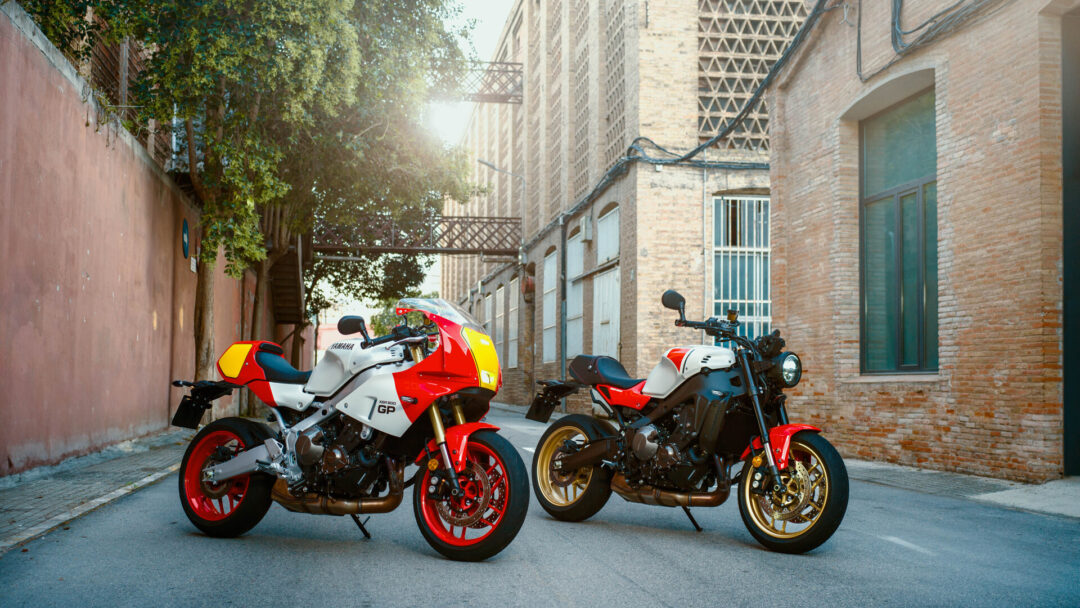
Yamaha went on to win six 500cc Grand Prix titles between 1984 and 1992, and the new XSR900GP is a nod to Yamaha’s racing tradition, paying homage to some of the most celebrated race machines from Yamaha’s illustrious past in a way never seen before in the Sports Heritage range.
Adorned in one of the most iconic Yamaha Grand Prix colours of all time, the XSR900 GP is available in a heritage livery inspired by the machines ridden by legends such as Wayne Rainey to multiple 500cc Grand Prix World Championships, complete with authentic yellow number boards on both front and rear cowlings.
Combining a sense of 1980s Grand Prix nostalgia with the very latest technology including the iconic, torque-rich 890cc CP3 engine, R1-derived six-axis IMU and lean sensitive rider aids, the XSR900 GP combines Yamaha’s Racing history with modern day performance.
The XSR900 GP features an upper cowling reminiscent of this era, not only with a clear influence from the 1980s YZR Grand Prix bikes but also with notes of the FZR and TZR production sports machines of the late 1980s and early 1990s. To maintain the race-bike look, the XSR900’s round LED headlamp is replaced by a compact lens module, neatly hidden in the front cowling, creating a sense of unity with the front fairing while maintaining excellent illumination.
The bodywork is not only a symbol of the past in looks alone, but the method in which it is fixed in position is also inspired by the 1980s, with a tubed structure connecting the cowling to the frame and straight brackets supporting the dash creating a rider’s view with a genuine golden era feel.
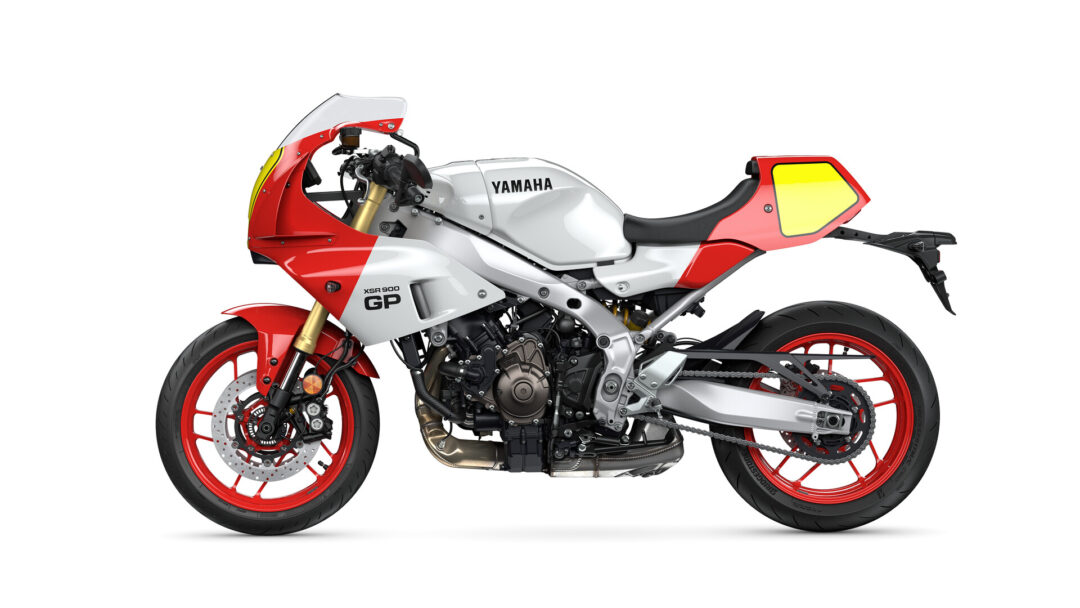
To emphasise the classic cockpit feeling, the upper fairing stay is supported by a nut structure identical to that used for the original TZ250. In true racing style, this structure is fastened with a beta pin, marking the first time Yamaha has used such a fastening on a mass-produced production model for public road use.
The function behind the move from the curvaceous cowlings of the 1970s to the more squared off style of the 1980s was to both improve aerodynamic efficiency and protect the rider from the wind coming from higher performance; and this is no different with the XSR900 GP.
While the windscreen and individual knuckle guards incorporate a taste of the 1980s; it’s not solely about looks. The power output and gear ratio of the 890cc CP3 engine are identical to that of the XSR900,
but the front cowling structure of the XSR900 GP increases both acceleration and top speed while the ducts on the side panels efficiently discharge heat from the radiator to maximise cooling performance.
The colour-matched seat cover fits over the passenger seat to complete the racer look with a boxy 1980s style rear end hiding the rear light, while a seat stopper on top of the seat cowling keeps the rider in position to enhance the feeling of acceleration.
The Deltabox-style chassis and swingarm are finished in silver to better evoke the era of the 1980s prototypes and emphasise the character of the Deltabox-style frame itself.
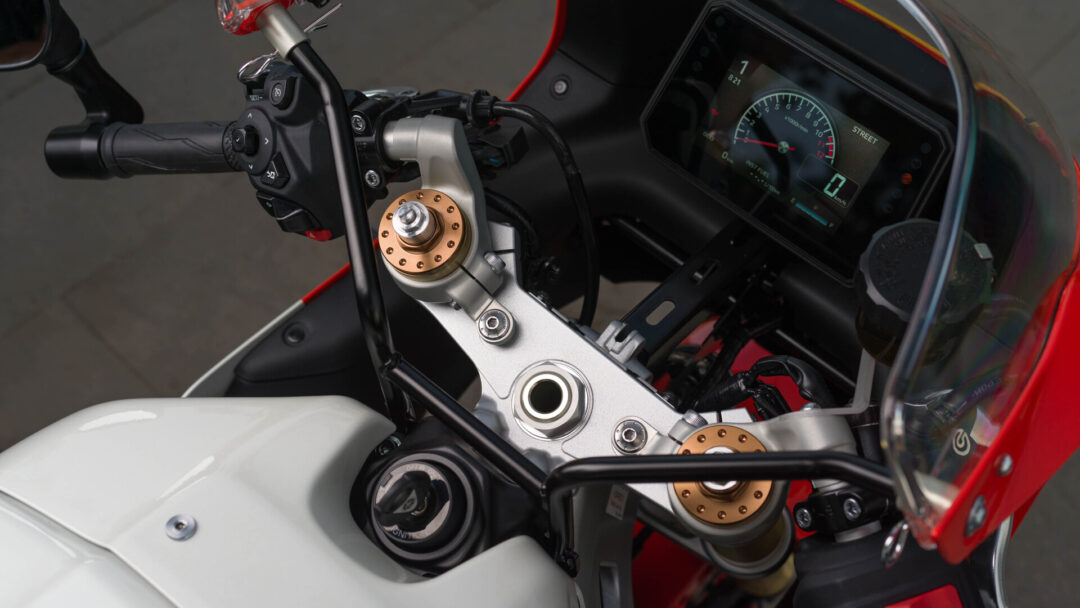
Race-style clip on handlebars
Separate ‘clip on’ handlebars add to the racer-style cockpit and offer a sportier riding experience.
The revised handlebars move the rider further forward on the machine into a sportier riding position, but not excessively. The position offers a balance that can be enjoyed on the road without discomfort. This comfort is emphasised via a thicker, more supportive seat.
The aluminium diecast footrests are adjustable to two different positions but come out of the factory set at the upper position to highlight the sportier riding position.
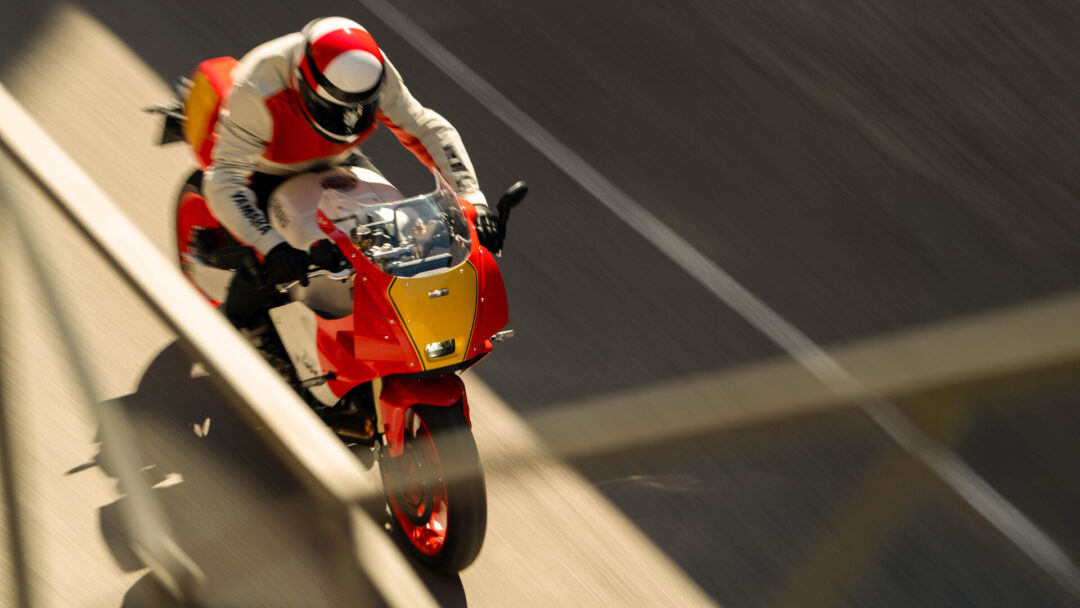
Tuned rigidity
To accommodate the extra load on the front end of the machine as a result of the more forward riding position, the XSR900 GP areas surrounding the frame have been tuned to optimise stability in turning.
The subframe has also been reinforced over the one found on the XSR900.
To further correspond with this front-end-led riding style, the XSR900 is the only CP3 model to feature an aluminium steering stem shaft, adjusting rigidity in the steering area to better balance the often conflicting feelings of lightness and stability when changing direction or under rapid deceleration.
In conjunction with the lightweight Spinforged wheels and new Bridgestone Battlax Hypersport S23 tyres, the rider can have precise confidence in placing the XSR900 GP exactly where they wish.
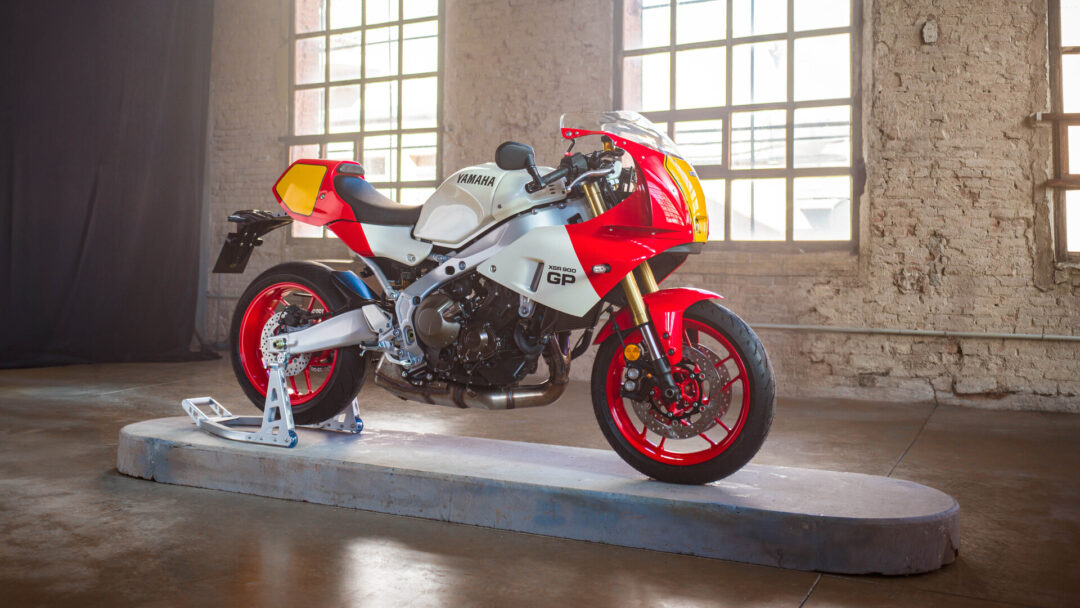
High performance brakes and suspension
In line with the mantra of blending yesterday’s style with modern technology, the XSR900 GP boasts the latest in suspension and braking components. The KYB upside-down front forks are fully adjustable for preload and compression damping as well as re-bound damping, so the ideal setup can be found for front end feel. The link-type rear suspension actuates a forward-inclined fully adjustable KYB shock virtually hidden from sight to maintain the slim and sporty performance at the rear. Remote pre-load adjust- ment makes customising the ride a simple task.
A Brembo radial front master cylinder underlines the bike’s cutting-edge specification and backs up its sporty potential, while the brake hoses have been optimised to improve braking control in sportier riding, especially under harder stopping forces.
Yamaha Ride Control (YRC)
Further maintaining the mix of nostalgic style with the latest in high-performance technology, XSR900 GP riders can customise their riding experience via Yamaha Ride Control (YRC). For simpler use, engine power characteristics and rider aids are integrated to quickly allow changes to the level of electronic in tervention depending on rider preferences and road conditions.
Three pre-set integrated riding modes, SPORT, STREET and RAIN feature factory settings with different intervention levels to suit different conditions.
These are complemented by two custom settings, which enable the rider to manually select their own power and intervention settings for the various elec- tronically controlled, lean-sensitive rider aids – all of which can be set using a smartphone via the MyRide app.
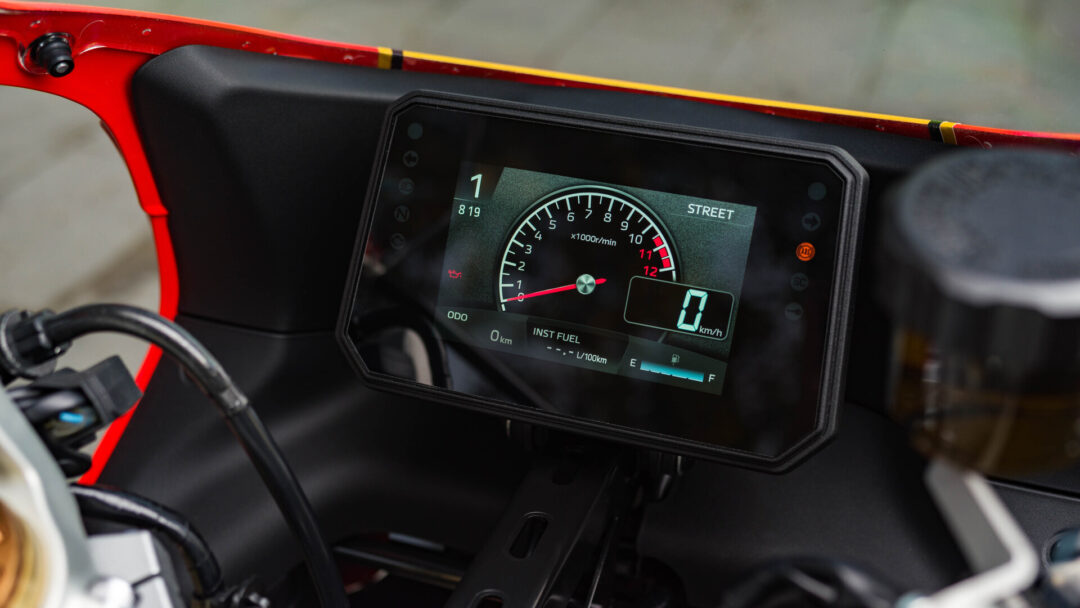
5in TFT meter with full connectivity
A new five-inch full-colour TFT display is housed in the retro-styled cockpit. While riders can choose from four different themes to suit a range of mindsets, a traditional analogue-style tachometer theme inspired by race bikes of yesteryear truly enhances the period riding experience.
Smartphone connectivity comes as standard on the XSR900 GP via a built-in Communication Control Unit (CCU), ensuring riders can stay connected while riding by linking their smartphone with their machine via the free MyRide Link app. As well as seeing call and message notifications on the 5in TFT display, a new dimension is added to the ride by the possibility of taking calls and listening to music via a Bluetooth headset (not included). Once connected, riders can also make use of the integrated Garmin StreetCross navigation system which will display Turn-By-Turn navigation on the 5in TFT dashboard.
There is also the option to provide power to external devices by the new USB Type C socket located near the dashboard.
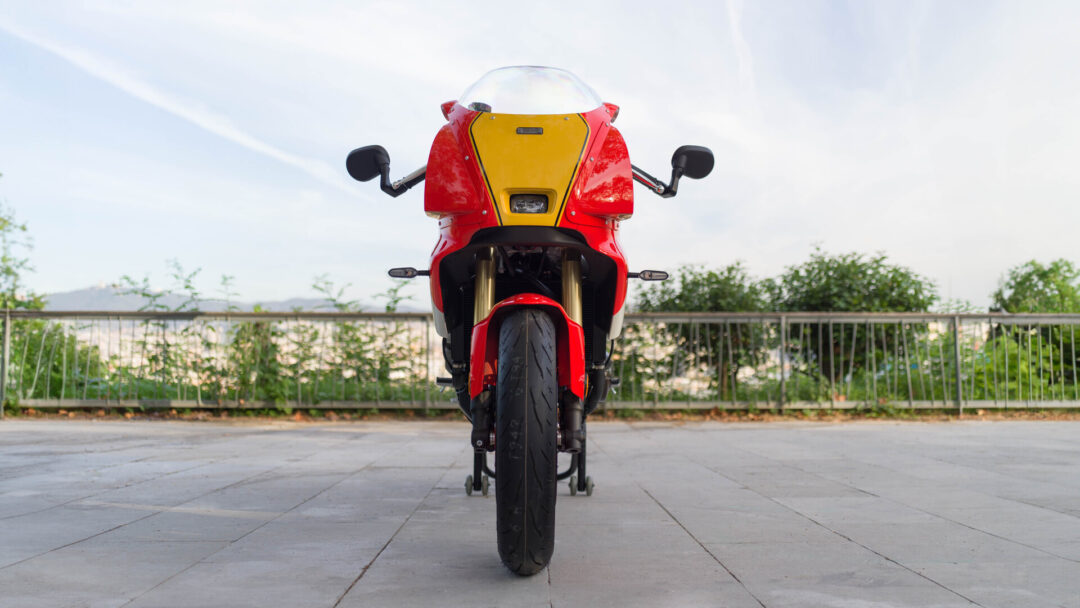
New ergonomic switchgear
New integrated handlebar switch assemblies enable the rider to operate the wider range of functions of the new XSR900 GP including smartphone connectivity, navigation and riding modes as well as interrogating the various menu options.
Featuring a clear, logical and simple design – the shape, movement and ergonomic layout of the buttons have been designed with intuitive movement in mind, meaning riders can cycle through the different functions with ease.
To aid navigation of busy road environments, a soft- click of the indicator switch will flash the turn signals three times for use when lane-changing or when only brief indication is required. A full-click of the switch will result in continuous flashing until 15 seconds has passed and when the machine has travelled more than 150 metres.
A new Emergency Stop Signal (ESS) function reacts to sudden braking by engaging the hazard lights to warn road users behind the vehicle is stopping at speed in an emergency situation.
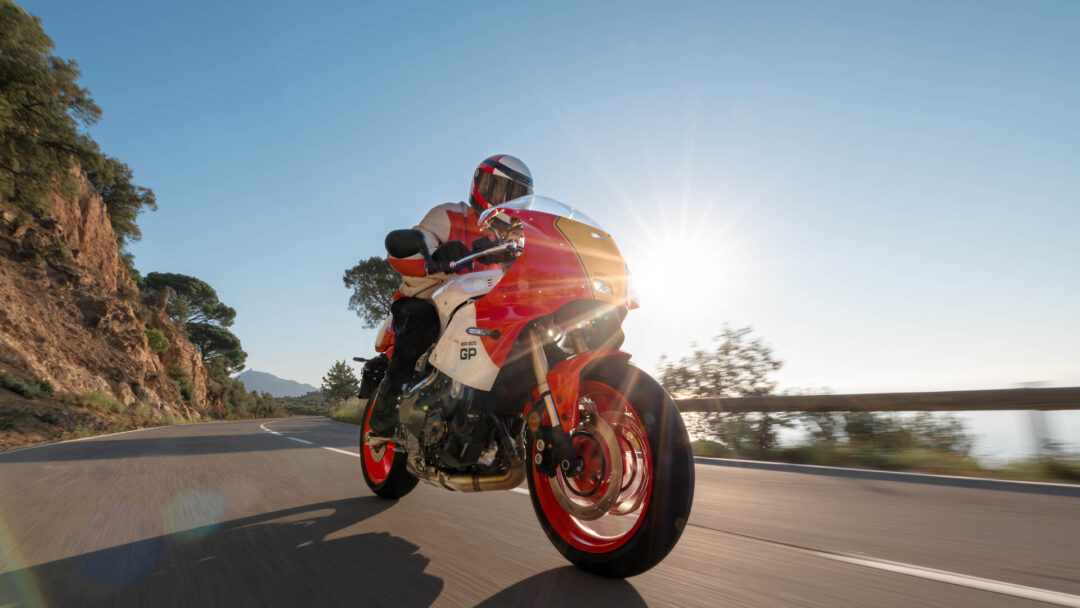
Extra support from advanced six-axis IMU with lean sensitive rider aids
Developed directly from the electronic systems on the R1, the XSR900 GP’s high-tech six-axis IMU con- stantly measures acceleration in the forward-back- ward, up-down and left-right directions – as well as the angular velocity in the machine’s pitch, roll and yaw directions.
The six-axis IMU is able to send data in real time to the ECU which controls the suite of electronic rider aids, including the lean sensitive Traction Control System (TCS), Slide Control System (SCS) as well as a front wheel Lift Control System (LIF) and Brake Control System (BC).
XSR900 GP also becomes the first Sport Heritage model to be equipped with the third-generation quick shift system, enhancing the ride by enabling clutchless downshifts while accelerating and clutch- less upshifts under deceleration in addition to the standard functionality
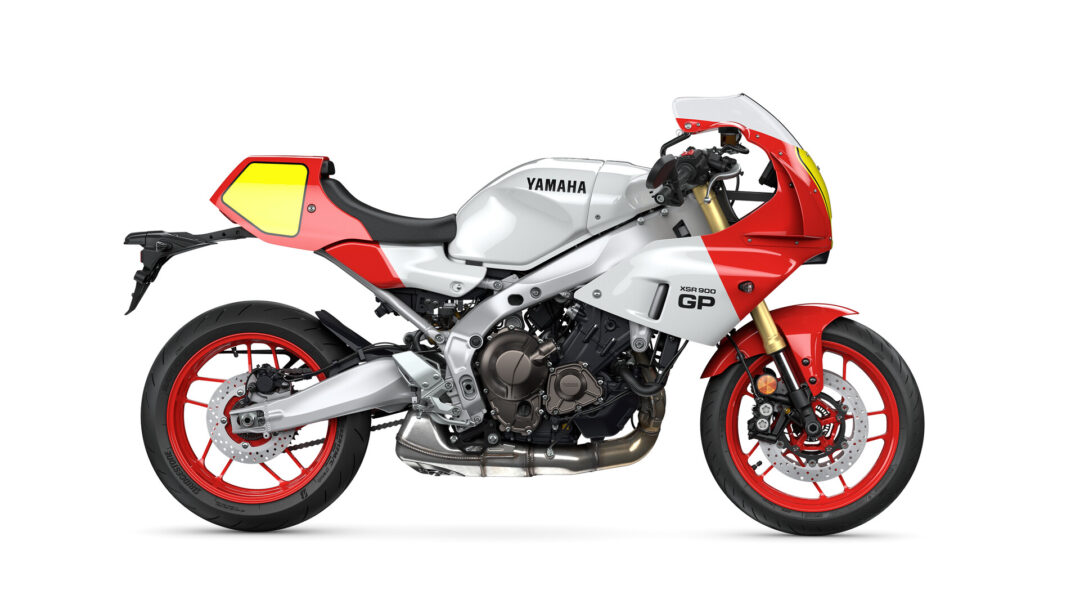
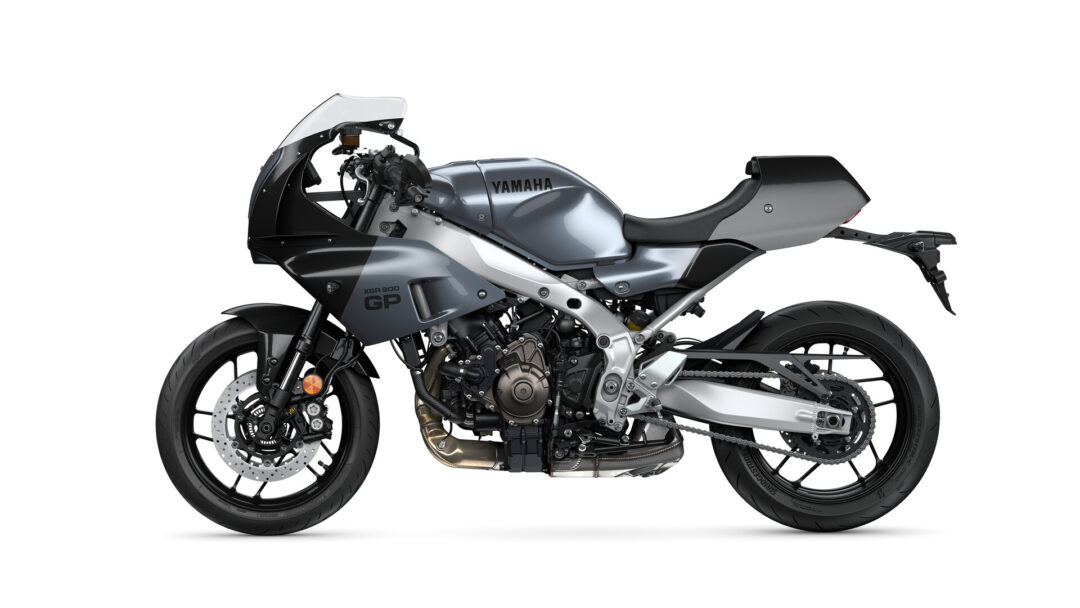
Colours, availability & price
The new XSR900 GP will be available in two colours Legend Red and Power Grey. Delivery dates to New Zealand dealers and prices are not set yet, more details will be supplied in due course.
Technical Highlights
- Distinctive design evocative of Grand Prix racers of the 80s and 90s
- New 5-inch full-colour TFT display with connectivity
- High grade fully adjustable front and rear KYB suspension
- Newly designed clip-on handlebars and handle-bar switches
- Deltabox-style chassis with optimised rigidity
- Comfortable main seat, new side covers and removable seat cover
- New footpeg style and positioning
- Yamaha Ride Control YRC and 6-axis IMU
- Cruise control, third-generation Quick Shift System and A&S Clutch
- Sophisticated high-torque CP3 890cc engine
- Yamaha Spinforged wheels fitted with Bridge- stone Battlax Hypersport S23
